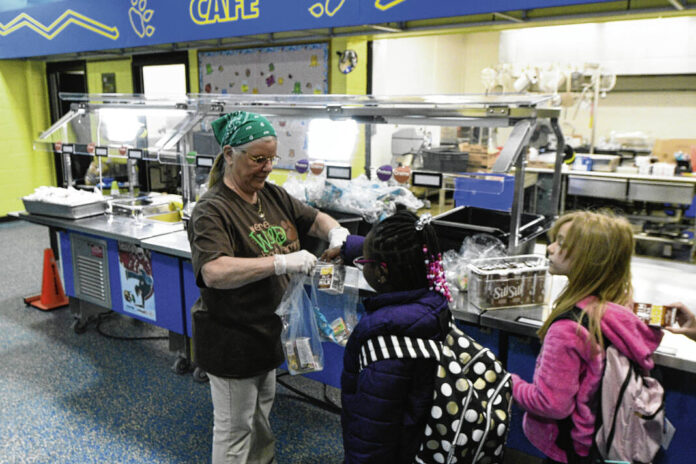At Johnson County schools, the challenges of inflation have hit virtually every area, from school meals to transportation to the cost of copy paper and office items.
While schools have weathered the storm for now, long-term inflation could have debilitating effects on how schools operate. Year over year, the Greenwood Community Schools has seen the cost of the cafeteria’s bakery goods increase by 107%, produce increase by 39%, colored copy paper soar 76% and school buses rise by between 18% and 43%, depending on when they were ordered, Superintendent Terry Terhune said in an email.
The school district has enough money in reserves so inflation isn’t affecting how it operates in the short term, but the effects of inflation if soaring prices continue past this year would greatly alter budgeting and prioritizing for Greenwood schools, said Todd Pritchett, assistant superintendent.
“If this lasts for a few more months, we’ll probably be OK, but if it were to continue, we simply wouldn’t be able to do as many things as we would have planned prior to an increase in costs,” Pritchett said. “If we were going to be redoing parking lots, we may have to push them off for a year, or do two instead of four. Maybe if we have a roof for 20 years and it’s out of warranty but we’re not having problems (we’ll put off fixing it). Instead, we would have to adjust and prioritize the areas of most significant need.”
Through just the first half of the calendar year, Center Grove Community Schools has already spent $450,000 of its $600,000 gasoline budget, said Paul Gabriel, chief financial officer.
“It’s harder to keep it at a certain level this year, that’s part of why we have money reserved for unplanned expenses. With gasoline, there’s nothing we can do. The original plans were to end the year with $500,000 in reserves and could take it all out if we have to,” Gabriel said. “Another example that’s pretty severe is probably the cost of school buses. We’ve taken a look at that and when we compare the buses we purchased from last fall to the prices today to project for next summer, there’s as much as a 30% increase in the price of buses.”
If the price of buses doesn’t decrease, Center Grove schools may not be able to purchase as many as they’d like, meaning only replacing buses that are in the most urgent need of being retired, he said.
Bus routes remain the same and the school day experience is generally the same as it was in years past, but families will again have to pay for school meals while they’re likely struggling under price increases. The price of school meals will increase after free breakfasts and lunches to all students, regardless of income, during the past two school years.
At Indian Creek schools, for example, lunch prices at the elementary school are going to $2.70, compared to $2.55 two years ago, and at the high school, lunches will cost $2.80, compared to $2.65 two years ago, said Tim Edsell, superintendent.
“We kept things relatively flat, but inflation demanded we do a 15-cent increase so we’re operating in the black and not in the red,” Edsell said. “We have seen bread prices go up 107% compared to last year’s bread. Milk prices increased by 14% and fruits and vegetables are up 40% compared to last year’s prices. Chicken and beef are up 15% to 20% as well.”
For maintenance projects, Indian Creek officials are seeing increases in labor costs that could cause the school district to postpone certain projects, Edsell said.
“It’s just making us prioritize, some we’ll do, some we’ll have to postpone,” he said. “It could be replacing carpet, painting some classrooms, we’re able to do some but maybe not as much as we wanted. We’re able to operate within our budget. It just makes us prioritize and it’s more of a challenge.”
At Clark-Pleasant Community Schools, some of the increase in expenses has been offset by savings from solar panels, said Austin Fruits, finance and budget director.
“Since last year, our diesel fuel is up 84%. We have a budget for transportation and they’re still spending within their means, so there’s no alarms right now going off for me,” Fruits said. “We’ve been able to get around some issues with utilities. One of the biggest helps for us, our solar fields are going in and the savings there can be repurposed so those dollars can offset costs. We hedged about 75% of consumption by locking in at historically low prices.”





